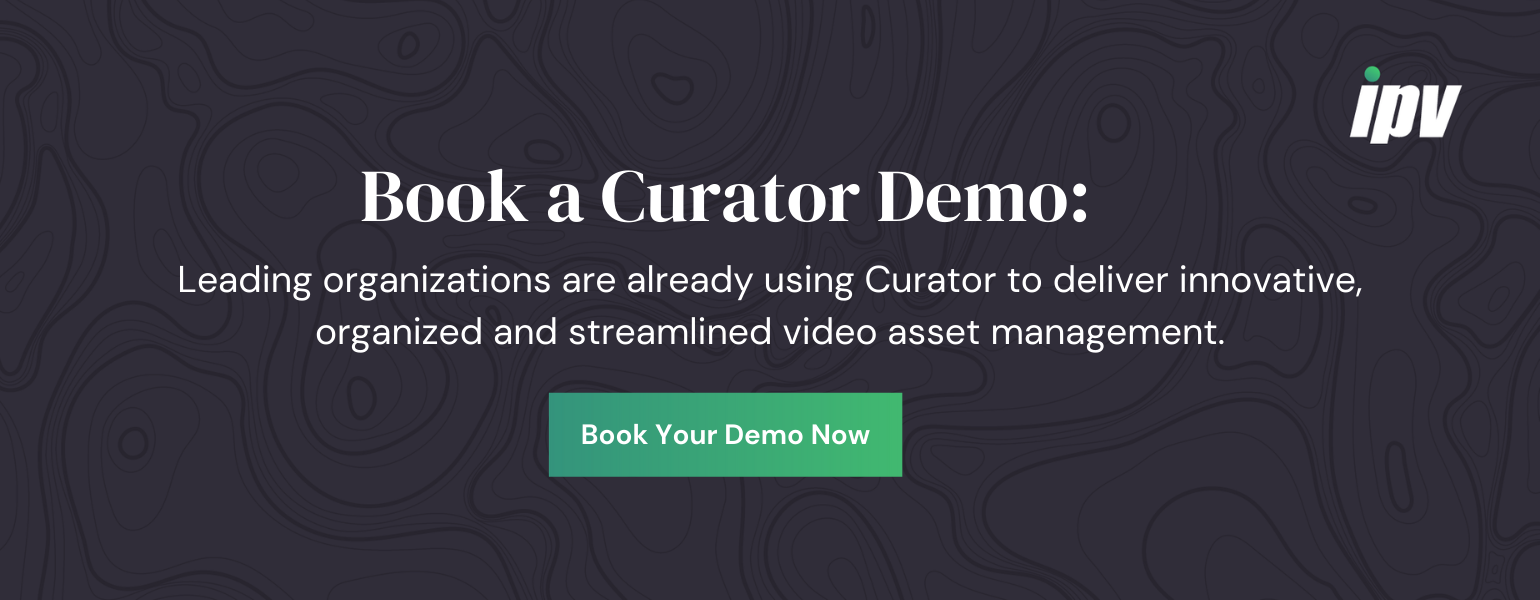
You know the stats. You know that to scale your customer experience strategy, you'll need video. It's a given. But once you've planned out the creative components of your CX video, you still have to go about making the video. And for all the great benefits of creating videos, the process itself can be time-consuming and complicated at times.
That's why it's important for you to find as many shortcuts as you can to make the process as seamless as possible. Here, we'll take a look at how to make the process 10x more efficient using a few simple guidelines. These will help you produce videos faster without sacrificing quality in any way - in fact, they'll only increase your videos' quality.
Building a library of assets
You may want to record a video of just a single person speaking directly into the camera to tell your story. While it's certainly one approach, it's not the most creative and probably won't captivate your viewers. To make a video that's truly engaging, you'll want to have lots of different clips in your video, as well as music and graphics. Over time, you’ll build up a whole library of assets that will be useful again and again. Instead of having to search for, create or pay for new content each time, you’ll often be able to repurpose existing content. Having the right music and graphics included in your video can create the perception that you have higher production values. They can increase the level of professionalism people associate with your work.
Depending on what type of video you're making, you may have a certain video clip or song in mind you'd like to include. You’ll need to make sure all the pieces of music and/or video you use are pre-cleared or royalty-free before you begin. The best places to find this type of footage are sites that offer stock video footage and music clips. You'll most likely have to pay some sort of licensing fee.
Some video footage sites include VideoBlocks and Shutterstock. For royalty-free music and sound effects, the YouTube Audio Library is the one of the easiest to access and best resources available. You may have to do some research to find the site with the best value that has what you want, but it beats including something you'll have to take down later.
Re-using content
Let's say you pour time and energy into making a video. And after writing it, filming it, editing it, and posting it, it's clear you have a winner. It's driving engagement for your company and helping improve your customer's experience. You may find yourself feeling a little frustrated at the thought of having to create another video just like it. But in some cases, you may not have to.
When you've created a video that resonates with your audience, sometimes it helps to reuse it. You obviously don't want to overdo it - customers can get fatigued if they see a piece of content too often. But there are ways you can get the most out of your investment in a video by reusing the content:
- Post it on multiple platforms. You can post it to your company's website, Facebook page, Twitter, Instagram, or LinkedIn. The great thing about an effective video is that it will do well on just about any platform. By re-using it on multiple channels, you expose it to even more of your audience.
- Turn the transcript into a blog post. You can post a word-for-word transcript on your blog, but you can also expand on some of the concepts. Videos are made for brevity whereas a blog post can give you some room to breathe and really explore some of the ideas your video touched on.
- Re-post it during peak hours. Each social media channel has an optimal time for you to post. Experiment posting your video at different times to catch different parts of your audience. This ensures you'll get more eyeballs on your great content.
You have to think strategically when you reuse content, but when you've created a compelling video, it only makes sense to use it as much as you can.
Finding the right assets
There’s only one problem with developing a library of great, reusable content. A video asset isn’t like a book: you can’t just open it and find what you need. Instead, you’ll have to watch whole videos until you’ve found the bit of the one you’re looking for - which can be as time-consuming as making a new piece of content in the first place!
Luckily, you can easily get past this problem by making sure that your content is properly organised and managed. A video asset management system is one way of making this easy - letting you spend more time creating great video and less on dull admin.

Collaboration and remote editing
The process of editing your video is an important one, as it can make or break your video's quality. Having sloppy cuts, poorly placed graphics, or timing issues can derail an otherwise professional production.
We’ve talked a lot about the advantages of an in-house editing team in this ebook and we think this is the best option for most organizations. However, the fact is that you may not have the capabilities to edit your video and you may not have anyone in-house to do so - or, your organization’s editing team may be based in a different location. In that case, remote collaboration with video editors can be the answer. This way you can get a proven expert who understands video editing software and production.
The only challenge with this kind of collaboration is that professional-quality video can sometimes be too big to send or share. In this case, talk to a video content management expert to work out what the best solution for your organization is. Collaboration with video is possible - it’s just a question of having the right tools. The important thing is making sure the editing is done to a high standard.
Proxy workflows to manage storage costs
Creating videos has a lot of benefits - it's the most popular form of content and it's a versatile medium that can be used for many different purposes that can improve customer experience. One of the drawbacks, however, is that storing video files can take up a lot of digital space and be costly. The editing process can also prove rather burdensome.
One of the ways to combat these costs and make the editing process a bit easier is to set up proxy workflows. Editing with a proxy allows you to use smaller files to edit with offline when using your chosen editing app.
There is more information available online about exactly how to do this, but know that it provides you with the flexibility to use smaller files, making editing and storage much easier and less costly.
Automating correct formats for different destinations
Depending on where you plan to post or use your video, you may need your video in different formats. For example, to post to YouTube, you'll need it to be in one of several formats such as an .mp4 or .wmv file. You'll need to understand a few things to ensure you have the right formats:
- What format does your video editing software produce your video in?
- What format does your destination platform require?
- What formats are your other video asset files in?
The key is to either make sure these answers align or that you're able to easily convert the file using your editing software. Automating this with a process known as video transcoding will help align all video and audio files you're putting into your final product. It helps to have a video content management platform to automate this part of the process.
Captioning
Once your video is complete, there's at least one more feature you should add before posting: captioning. There are a few advantages to including captions on your video that will only enhance the customer experience:
- Accessibility. Some of your customers may be hearing impaired. That's where captioning can help your customers who need assistance watching your video. Your hearing-impaired listeners will appreciate this - and they may notice if you don't equip your video with captions.
- Social media. When you post a video to social media, you may have users on some scroll past it on whatever platform they're using. Adding a caption gives you an extra advantage in getting people to notice your video. Many of your followers may be watching the video at work without their sound on. Having captions allows them to comprehend what your video's saying without audio.
GoogleDrive gives you the capability to add captions to your videos fairly easily. YouTube also has controls in place for this. You can integrate speech-to-text to add captions as well with the right video management platform.
Adding captions to your videos is one of the final touches you can put on that may not improve the actual video's quality, but does make it more engaging for the customer to watch. It will attract more viewers, which should always be your goal. Once you've figured out how to create a repeatable process for creating your videos in the most efficient way possible, you can now look towards figuring out which metrics will properly evaluate each video's success.
Key Takeaways
- Building a library of assets that you can repurpose will save you time and money. This should include royalty-free music and graphics to increase the production value of your content.
- Make the most of great content by posting it on multiple platforms (making sure you do so at the peak time for each) and using the transcript as the basis for a blog post.
- As you develop a large content library it may be difficult to find the content you need. This is where a video content management system (VCM) can help. A VCM can also help you to automatically get your content into the right format for each platform you send it to.
- If you need to work with a video editor remotely, make sure you talk to an expert about getting the right tools to share video properly.
- Using proxy workflows can help you to avoid the high storage costs associated with storing lots of video.
- Adding captions to your videos can be beneficial both for hearing-impaired listeners, and those who want to watch without sound.


Speak Your Mind